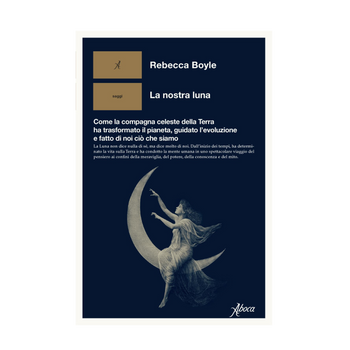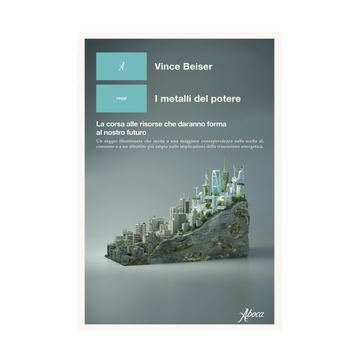You have no items in your shopping cart.
Box Kitâb al-Diryâq Box Kitâb al-Diryâq
With comments in French, English and Arabic With comments in French, English and Arabic
Muhammad ibn Abi al-Fath Muhammad ibn Abi al-Fath
€458,00
The Arabic version of a centuries-old panacea.
The Arabic version of a centuries-old panacea.
Availability:
In Stock
Sku: COFTERIT
ISBN/EAN: 8032472003687
An exquisite chest with a flavour of the ancient orient, with colours of the sun, enhanced with an application of hot foil gold lettering.
Aboca Edizioni presents a selection of plates from the Kitâb al-Diryâq, a splendid manuscript handwritten in 1199 by Muhammad ibn Abi al-Fath and conserved at the Biblioteca Nazionale, Paris. The work is dedicated to theriac, an ancient medicinal compound initially used to treat snakebites and then used as a panacea. Choose between the 72 elegant pages that make up the manuscript, the 15 plates contained on the pages illustrate, via clever miniatures and golden spirals, the most common and widely used medicinal plants in the Arab world in the XII century.
From the comment by Oleg Grabar: "The variety of types of character, the range of clothes they wear or the activities they are doing, the many animals (horses in particular), the plants, the items and the architectural fragments found in these pages are truly extraordinary and without equal in the XII century. [...] How was all of this possible during the declining years of the XII century in a part of the Arab speaking world that extended from Egypt to Iran? According to current knowledge, there were no attempts at such art prior to the Kitâb al-Diryâq in 1199".
The in-depth commentary, from world-renowned experts of Arabic history, reconstructs the text tradition of the manuscript, examines its content, illustrates its historical bearing, iconographic content and decorative motifs.
Aboca facsimiles for professional use: fundamental works available to all. Legendary additions and splendid manuscripts, selected from the libraries throughout the world, have been reproduced using avant-garde printing techniques, complete with thorough and concise critiques.
Notes
Introduction by Valentino Mercati.
Contributions by Jaclynne Kerner, Marie Geneviève Guesdon, Oleg Grabar, Françoise Micheau, Anne Caiozzo.
Other information
The manuscript of the Kitâb al-Diryâq came to the Biblioteca Nazionale, Paris in May 1879, under Arab supplement number 2433, after having been purchased by a Parisian doctor, Dr Letorneau, for the amount of Fr.1000. The volume previously belonged to a pharmacist, Jean Françoise Bonastre, who had acquired it on 7 November 1832. The method by which it arrived in the west is unknown, however it is likely that it happened in the XVIII century or at the beginning of the XIX century. In the east, the volume seems to have circulated especially in Iran, as illustrated by the transcriptions added by those who held it and the notes in Persian on the final page. The last four lines on the final page take the form of an afterword where the scribe, after having indicated the end of the text, added the drafting end date to his name, January 1199.
An exquisite chest with a flavour of the ancient orient, with colours of the sun, enhanced with an application of hot foil gold lettering.
Aboca Edizioni presents a selection of plates from the Kitâb al-Diryâq, a splendid manuscript handwritten in 1199 by Muhammad ibn Abi al-Fath and conserved at the Biblioteca Nazionale, Paris. The work is dedicated to theriac, an ancient medicinal compound initially used to treat snakebites and then used as a panacea. Choose between the 72 elegant pages that make up the manuscript, the 15 plates contained on the pages illustrate, via clever miniatures and golden spirals, the most common and widely used medicinal plants in the Arab world in the XII century.
From the comment by Oleg Grabar: "The variety of types of character, the range of clothes they wear or the activities they are doing, the many animals (horses in particular), the plants, the items and the architectural fragments found in these pages are truly extraordinary and without equal in the XII century. [...] How was all of this possible during the declining years of the XII century in a part of the Arab speaking world that extended from Egypt to Iran? According to current knowledge, there were no attempts at such art prior to the Kitâb al-Diryâq in 1199".
The in-depth commentary, from world-renowned experts of Arabic history, reconstructs the text tradition of the manuscript, examines its content, illustrates its historical bearing, iconographic content and decorative motifs.
Aboca facsimiles for professional use: fundamental works available to all. Legendary additions and splendid manuscripts, selected from the libraries throughout the world, have been reproduced using avant-garde printing techniques, complete with thorough and concise critiques.
Notes
Introduction by Valentino Mercati.
Contributions by Jaclynne Kerner, Marie Geneviève Guesdon, Oleg Grabar, Françoise Micheau, Anne Caiozzo.
Other information
The manuscript of the Kitâb al-Diryâq came to the Biblioteca Nazionale, Paris in May 1879, under Arab supplement number 2433, after having been purchased by a Parisian doctor, Dr Letorneau, for the amount of Fr.1000. The volume previously belonged to a pharmacist, Jean Françoise Bonastre, who had acquired it on 7 November 1832. The method by which it arrived in the west is unknown, however it is likely that it happened in the XVIII century or at the beginning of the XIX century. In the east, the volume seems to have circulated especially in Iran, as illustrated by the transcriptions added by those who held it and the notes in Persian on the final page. The last four lines on the final page take the form of an afterword where the scribe, after having indicated the end of the text, added the drafting end date to his name, January 1199.
Dimensions: 31 x 41 x 6,5 cm
Plates paper: Al tatto presentano la tipica ondulazione e morbidezza della pergamena del manoscritto. L′applicazione a caldo dell′oro in lamina conferisce una speciale lucentezza e preziosità ad ogni tavola;
Plates box: le scritte sulla cartella e sulla coperta del Commentario sono in oro satinato in lamina;
Commentary: in seta con impressioni in oro e turchese
Commentary pages: 272
Commentary illustrations: 156
Dimensions: 31 x 41 x 6,5 cm
Plates paper: Al tatto presentano la tipica ondulazione e morbidezza della pergamena del manoscritto. L′applicazione a caldo dell′oro in lamina conferisce una speciale lucentezza e preziosità ad ogni tavola;
Plates box: le scritte sulla cartella e sulla coperta del Commentario sono in oro satinato in lamina;
Commentary: in seta con impressioni in oro e turchese
Commentary pages: 272
Commentary illustrations: 156



















